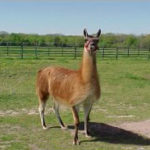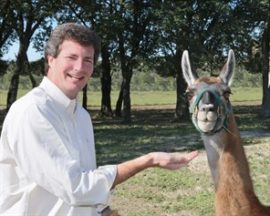
Rusty was a 26 year old llama. He lived across the parking lot from our lab in the Stevenson Center. He was not really ours at all. But we liked him and he seemed to like us. His hobbies were grazing and expectoration. Unfortunately, Rusty went to live with the great llama master in the sky in October 2016, but he will forever live as the mascot for our lab.
So why the heck would a lab that studies sharks and frogs want a llama as a mascot? Especially one with Rusty’s manic temperament? While his terrific posture and handsome eyes helped, the real answer lies in his humoral immune system!

Antibodies are made by B cells and they are comprised of heavy and light chains… usually! In a beautiful example of homoplasy, both cartilaginous fish and camelids have evolved antibodies that use pairs of heavy chains, but with no light chains. These two very divergent groups of vertebrates both convergently arrived at this antibody innovation in their evolution. The stability and single-variable domain paratopes of these antibodies are being exploited for diverse applications. The sharks appear to go a step further and use a relative of the single chain variable on some T cells, we call this NARTCR. (No, even this wonderful molecule does not protect sharks from cancer.) Incredibly, early mammalian lineages (marsupials and monotremes) use a similar T cell receptor usually with two variable domains as well, yet from a different locus. More gorgeous convergent evolution demonstrating the diverse paths that have arrived at similar contrivances in lymphocyte receptor repertoires.
Next time you see a llama at the zoo or in the wild, bow down and pay homage. They have a repertoire of antibody structures that most of us bony Teleostomi can only dream of! Call out to them and maybe they’ll come running… but if their ears drop back you might want to take cover.
